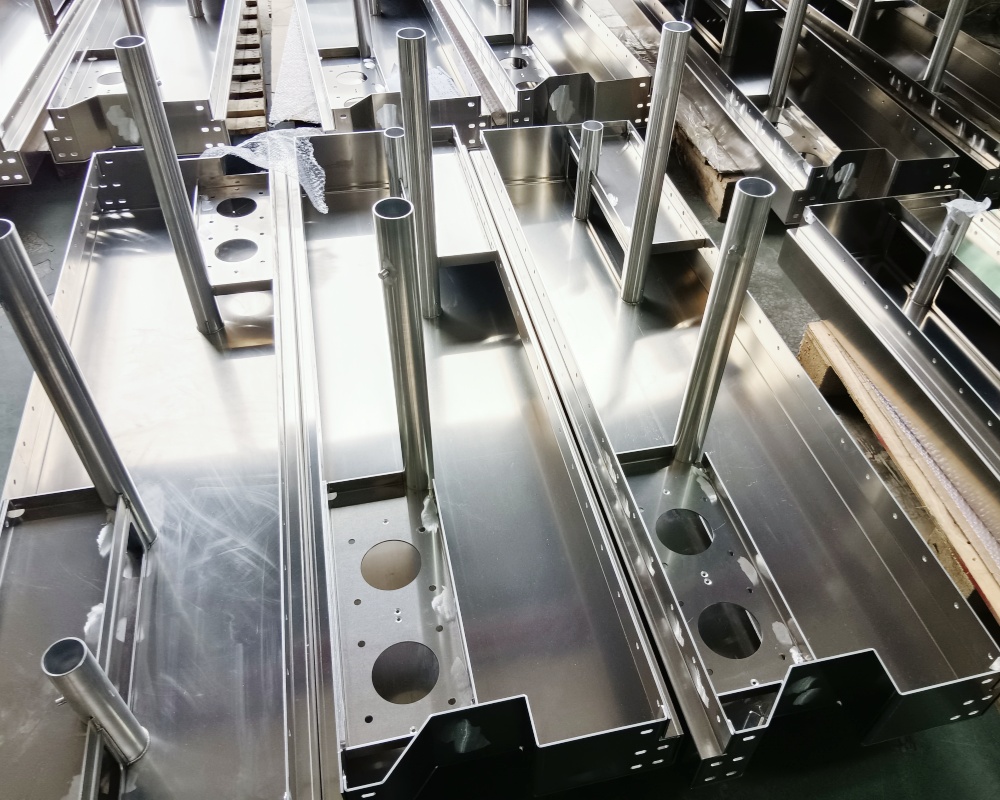Welding sheet metal requires techniques that minimize distortion and ensure strong, clean joints. Here are some commonly used techniques:
- TIG (Gas Tungsten Arc Welding):
- Advantages: Provides precise control over heat input, suitable for thin metals (0.5mm to 4mm), produces clean welds with minimal spatter.
- Considerations: Requires skill due to precise control needed, slower process compared to MIG.
- MIG (Gas Metal Arc Welding):
- Advantages: Faster than TIG, easier to learn and use, suitable for thicker metals (1.6mm and up), good for production environments.
- Considerations: Can produce more spatter and requires good fit-up to prevent burn-through on thin sheets.
- Resistance Spot Welding:
- Advantages: Fast and efficient for joining sheet metal in automotive and manufacturing applications, minimal heat-affected zone.
- Considerations: Limited to lap joints, requires access to both sides of the workpiece.
- Pulsed MIG Welding:
- Advantages: Helps control heat input and reduces distortion, suitable for thin materials.
- Considerations: Equipment can be more expensive, settings need adjustment for different materials and thicknesses.
- Laser Welding:
- Advantages: Precise, non-contact process that can weld thin materials quickly with minimal distortion.
- Considerations: Equipment cost is high, requires precise fit-up and fixturing, limited to certain types of sheet metal.
- Plasma Arc Welding:
- Advantages: Can weld thin materials with good control over heat input, similar to TIG but faster.
- Considerations: Complex equipment setup and higher operating costs compared to TIG.
- Oxy-Acetylene Welding:
- Advantages: Can weld thin sheets, portable equipment, suitable for outdoor use.
- Considerations: Slower compared to other methods, higher heat input can lead to distortion, requires skill for control.
When choosing a welding technique for sheet metal, consider factors like material thickness, joint type, production volume, and available equipment. Each technique has its strengths and limitations, so selecting the right one will depend on the specific requirements of your project.
china sheet metal manufacturing manufacturers
china aluminium sheet metal fabrication supplier
china sheet metal fabrication parts factory
china sheet metal fabrication parts manufacturer
china sheet metal fabrication supplier
china sheet metal fabrication services
china precision sheet metal fabricators
china custom sheet metal parts
china aluminum sheet metal fabrication manufacturers
china sheet metal parts company
china precision sheet metal manufacturer
china sheet metal enclosure fabrication
china sheet metal parts manufacturers
china metal stamping parts manufacturer
China sheet metal fabrication factory
sheet metal parts manufacturing china
china metal enclosure manufacturers
china sheet metal fabrication manufacturers
sheet metal fabrication company china

Leave a Reply